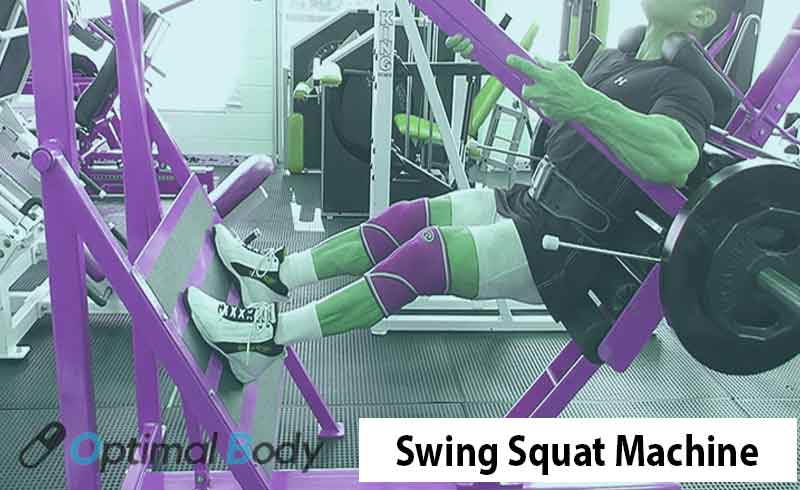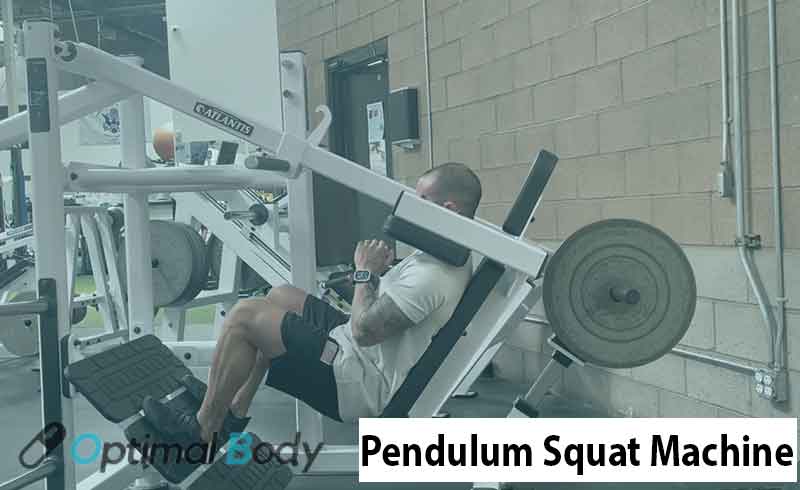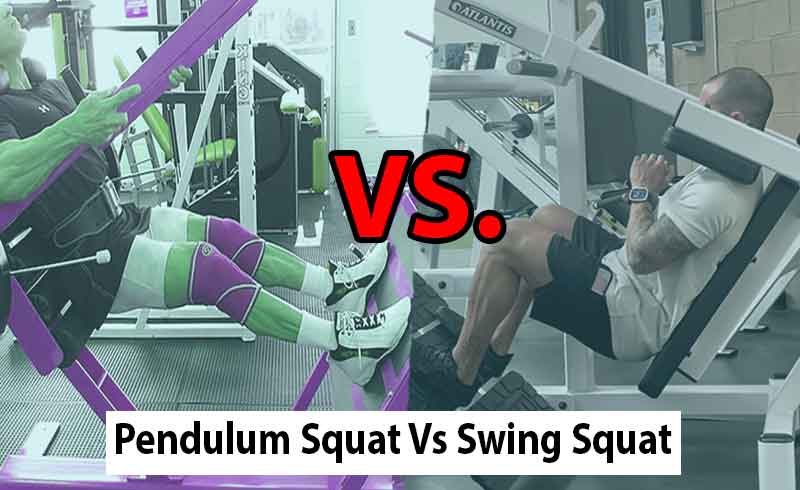I’ve eagerly anticipated the opportunity to compare the swing squat and the pendulum squat machines.
This comparison is based on my extensive hands-on experience with both machines over a considerable period.
Unlike hasty reviews found on social media, my assessment is well-informed, providing valuable insights into these gym equipment options.
However, everyone is entitled to their own opinions and experiences, and I respect that diversity.
Pendulum Squat Vs Swing Squat Machine: The Main Differences
The swing squat and pendulum squat machines have subtle yet crucial differences in their platform designs.
1. The Swing Squat Machine

The swing squat offers a distinct swinging back-and-forth motion, providing a sense of liberation during the exercise.
Its unique design sets it apart from the pendulum squat and places a greater emphasis on engaging the glutes.
- Angle Adjustment: The swing squat can utilize a heel wedge, allowing users to modify the angle to suit their preferences.
- Pad Descent: The pad on the swing squat doesn’t descend as far as the one on the pendulum squat.
- Counterbalance Arm: The swing squat lacks a counterbalance arm, which is a feature present in the pendulum squat.
- Muscle Engagement: The emphasis on glute engagement provides a unique feel and experience, making it appealing for targeting the posterior chain.
- Swinging Motion: The swinging motion of the swing squat makes it particularly effective for targeting the posterior chain, including the hips, hamstrings, and glutes.
2. The Pendulum Squat Machine

The pendulum squats, specifically the Paramount total leg version I have, boasts a pad that descends a little further than the swing squats.
- Angle Adjustment: Similar to the swing squat, the pendulum squat’s angle can also be adjusted with a heel wedge.
- Counterbalance Arm: The pendulum squat comes equipped with a counterbalance arm, which proves useful in assisting users at the bottom of the movement when used correctly.
Target Muscles - Muscle Engagement: The focus on the quadriceps, along with the assistance provided by the counterbalance arm, delivers a challenging and effective workout for the front of the thighs.
Personalization Matters - Swinging Motion: With its 135-degree platform angle, the pendulum squat is better geared towards targeting the quadriceps more intensely compared to the 125-degree angle of the swing squat.
The counterbalance arm in the pendulum squat is a valuable feature, but many users fail to realize its full potential.
Properly utilizing the counterbalance arm can make a significant difference in the exercise’s effectiveness, offering a smoother and more controlled strength curve.
Swing Squats Vs. Pendulum Squats: Demo Video
In conclusion:
Both the swing squat and the pendulum squat offer valuable benefits for a comprehensive lower body workout.
Their differences in design and target muscles cater to different training objectives.
Try both machines and consider your personal preferences will determine the ideal fit for you.
- Bench Press Calculator - April 22, 2024
- Press to Handstand: Ultimate Step-by-Step Guide - April 22, 2024
- Cable Press (How To Do, Benefits, Targeted Muscles, Alternative) - April 22, 2024

